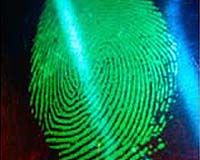| . |  |
. |
Champaign, Ill. (UPI) Nov 16, 2009 A University of Illinois study of pedestrian safety has found using a cell phone while walking can endanger one's health. The study involved people crossing a virtual street while either talking on the phone or listening to music. The scientists said they discovered music-listeners were able to navigate traffic as well as the average unencumbered pedestrian. But users of hands-free cell phones, however, took longer to cross the same street under the same conditions and were more likely to get run over by a vehicle. "Many people assume that walking is so automatic that really nothing will get in the way," said psychology Professor Art Kramer, who led the research with Professor Jason McCarley and postdoctoral researcher Mark Neider. "But actually walking in environments that have lots of obstacles is perhaps not as automatic as one might think." The study, published in the journal Accident Analysis and Prevention, found college-age adults who were talking on a cell phone took 25 percent longer to cross the street than their peers who were not on the phone. They were also more likely to fail to cross the street in the 30 seconds allotted for the task, even though their peers were able to do so. A second study that focused on adults 60 years or older has not yet been published.
earlier related report Twenty-six percent of teenagers aged 16 and 17 have texted while driving, according to the survey by the Pew Internet and American Life Project -- about the same rate as found in separate studies conducted among adults. The survey found boys and girls were equally likely to text while driving. Forty-three percent of teens aged 16 and 17 have talked on a cellphone while driving, the study by the Washington-based Pew found. According to Pew, 82 percent of teens aged 16 and 17 have a cellphone and 76 percent of them send text messages. Forty-eight percent of teens aged 12 to 17 said they have been in a car when the driver was texting and 40 percent said they have been in a car when the driver used a cellphone in a way that put themselves or others in danger. A number of US states have banned text messaging or talking on a handheld cellphone while driving and the US Senate is considering legislation to crack down on so-called "distracted driving." According to the National Highway Traffic Safety Administration, there were 5,870 fatalities last year in crashes in which driver distraction was reported. An estimated 515,000 people were injured in such crashes. The Pew survey involved 800 teens between the ages of 12 and 18 and was conducted this summer. It has a margin of error of plus or minus four percentage points. Share This Article With Planet Earth
Related Links All About Human Beings and How We Got To Be Here
 India plans fingerprint IDs for billion-plus citizens
India plans fingerprint IDs for billion-plus citizensNew Delhi (AFP) Nov 16, 2009 India's 1.16 billion people are each to receive their own identity number under a monumental plan designed to cut corruption and improve distribution of state benefits. The project -- modelled on social security numbers in the United States -- will compile an Internet database of the personal details, fingerprints and photograph of every Indian across the vast and chaotic country. ... read more |
|
| The content herein, unless otherwise known to be public domain, are Copyright 1995-2009 - SpaceDaily. AFP and UPI Wire Stories are copyright Agence France-Presse and United Press International. ESA Portal Reports are copyright European Space Agency. All NASA sourced material is public domain. Additional copyrights may apply in whole or part to other bona fide parties. Advertising does not imply endorsement,agreement or approval of any opinions, statements or information provided by SpaceDaily on any Web page published or hosted by SpaceDaily. Privacy Statement |